Thanks to a grant from the Alliant Energy Foundation, we were able to create and restore habitat for monarchs, bumblebees, turtles, and many other birds and wildlife species at the Sugar River Wetlands State Natural Area near Verona, WI.
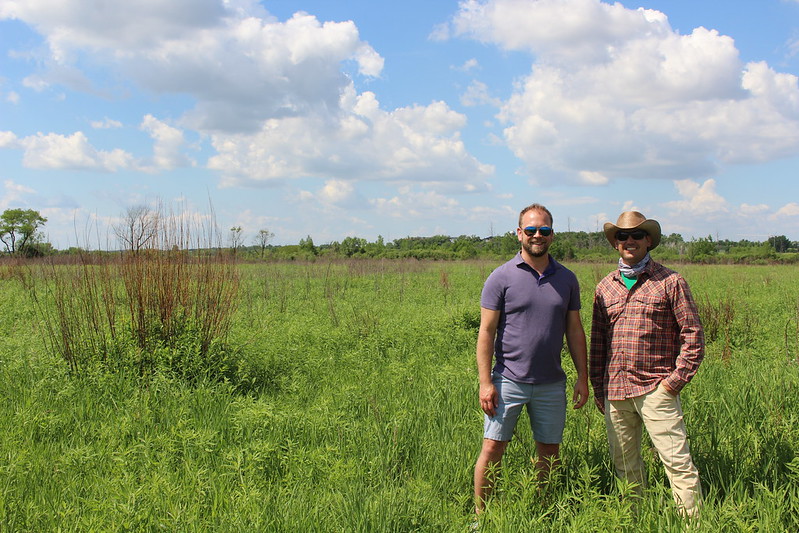
Adam Erdmann, senior community affairs program officer with Alliant Energy Foundation (left), and DNR ecologist Nate Fayram (right) visit the Sugar River Wetlands SNA to view the success of restoration work. Photo by Cait Williamson
Our pollinators need biodiverse, native ecosystems to thrive. Protecting that habitat is a labor of love—but it pays off.
We’re excited to share the success of recent restoration work at the Sugar River Wetlands State Natural Area, which is located near Madison, Fitchburg, and Verona, WI. Those in the city won’t have to travel too far to explore this SNA’s amazing biodiversity.
Restoration work at Sugar River Wetlands SNA was completed thanks to a grant from the Alliant Energy Foundation. Their funding allowed us to support a variety of restoration and management activities at Sugar River Wetlands SNA, put into action by the efforts of a State Natural Areas Crew from the Wisconsin Department of Natural Resources.
Members of the SNA Crew went above and beyond to create that sweet, sweet habitat that our pollinators and other wildlife rely on.
Enjoy these highlights from their work:
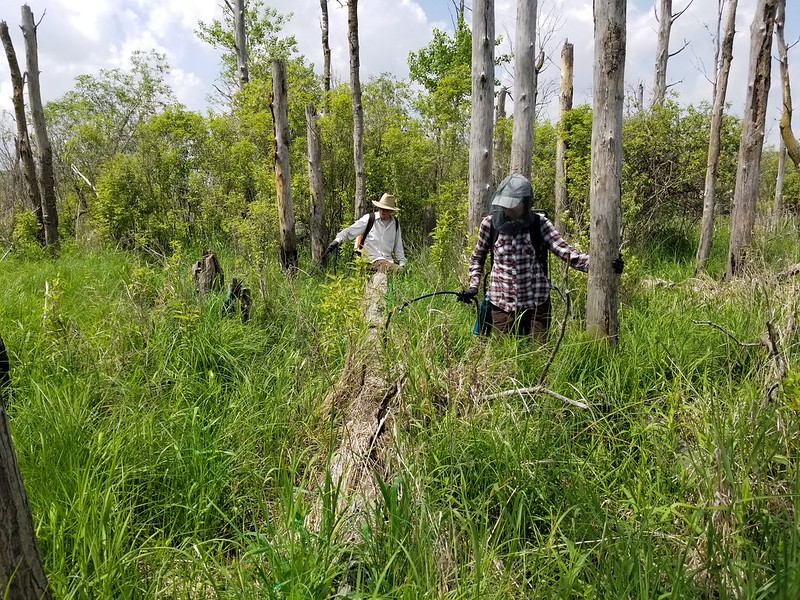
The State Natural Areas Crew tackled invasive reed canary grass on three acres that surrounded the highest quality prairie and wetland at the site. Photo by Bridget Rathman, Wisconsin DNR
Goodbye invasive reed canary, hello biodiversity!
Reed canary grass is one of the most pervasive invasive species threatening the Midwest’s wetlands. Its dense roots choke out native vegetation, leaving no room for a diverse mix of flowers, grasses, and sedges that would support hundreds of species of insects—including our most at-risk pollinators, like monarchs and bumble bees.
The SNA Crew was able to continue their long-term plan to control this invasive grass, tackling it across three acres of the wetland. Management of this species is key for allowing plantings of native vegetation that will support pollinators, but its removal also improves conditions for wetland critters—like turtles, frogs, and snakes that struggle to forage, mate, and lay eggs among the thick dense mats this grass creates.
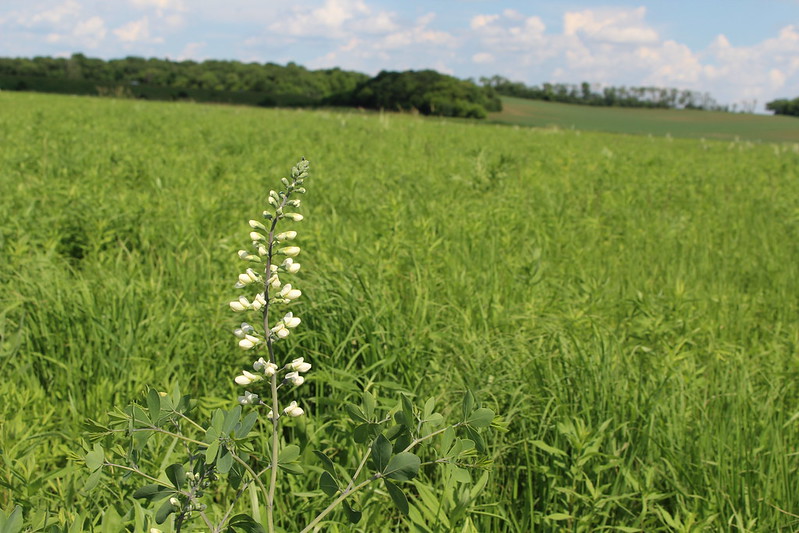
Wild white indigo blooms at Sugar River Wetland SNA. Managing invasive reed canary makes more room for native plants that our pollinators need. Photo by Cait Williamson
Opening the oaks
In addition to improving the biodiversity of the wetland and prairie, workers were able to remove a dense infestation of buckthorn and box elder on one acre of degraded oak savanna, a globally rare natural community. While oak savanna was once common in Wisconsin, it’s estimated that only 0.01% of Wisconsin’s original oak savanna remains.
At one time, the area beneath the oak canopy was likely a diverse forest floor—but in the absence of prescribed fire, invasive buckthorn and box elder had taken over. The SNA Crew was able to cut the invasive trees, clear the brush, and treat the stumps with an herbicide to keep them from resprouting.
This summer, they continued to monitor and treat any buckthorn seedlings that had resprouted, and as fall approaches, native seeds will be sown to support a healthier community of plants in the oak savanna.
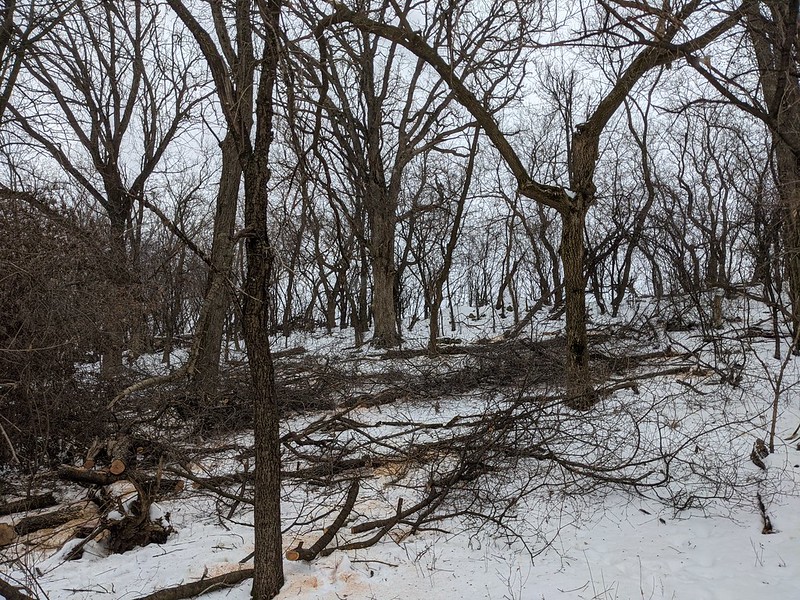
Grant funding supported the removal of this dense understory of buckthorn and box elder that had taken over this oak savanna community. Photo by Bridget Rathman, Wisconsin DNR
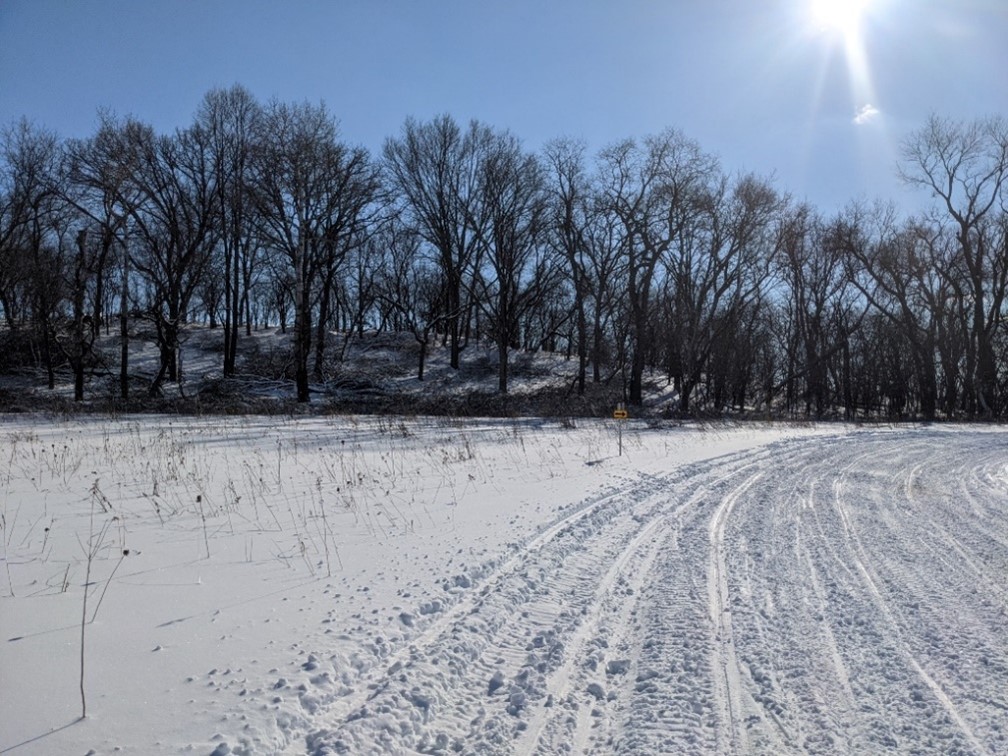
Winter work on this site made important progress in clearing brush from under the oak canopies, with the goal of returning this part of the Sugar River Wetlands to the oak savanna it once was. Photo by Bridget Rathman, Wisconsin DNR
Home sweet home
The work being done at Sugar River Wetlands SNA is helping create and restore habitat for monarchs, bumble bees, other pollinators, and numerous other birds and wildlife species that call this special place home.
We’re grateful to the Alliant Energy Foundation for making this work possible, and for the SNA Crew from the Wisconsin DNR whose tireless efforts have already resulted in the protection of vital habitat for critters and pollinators of the Sugar River Wetlands.
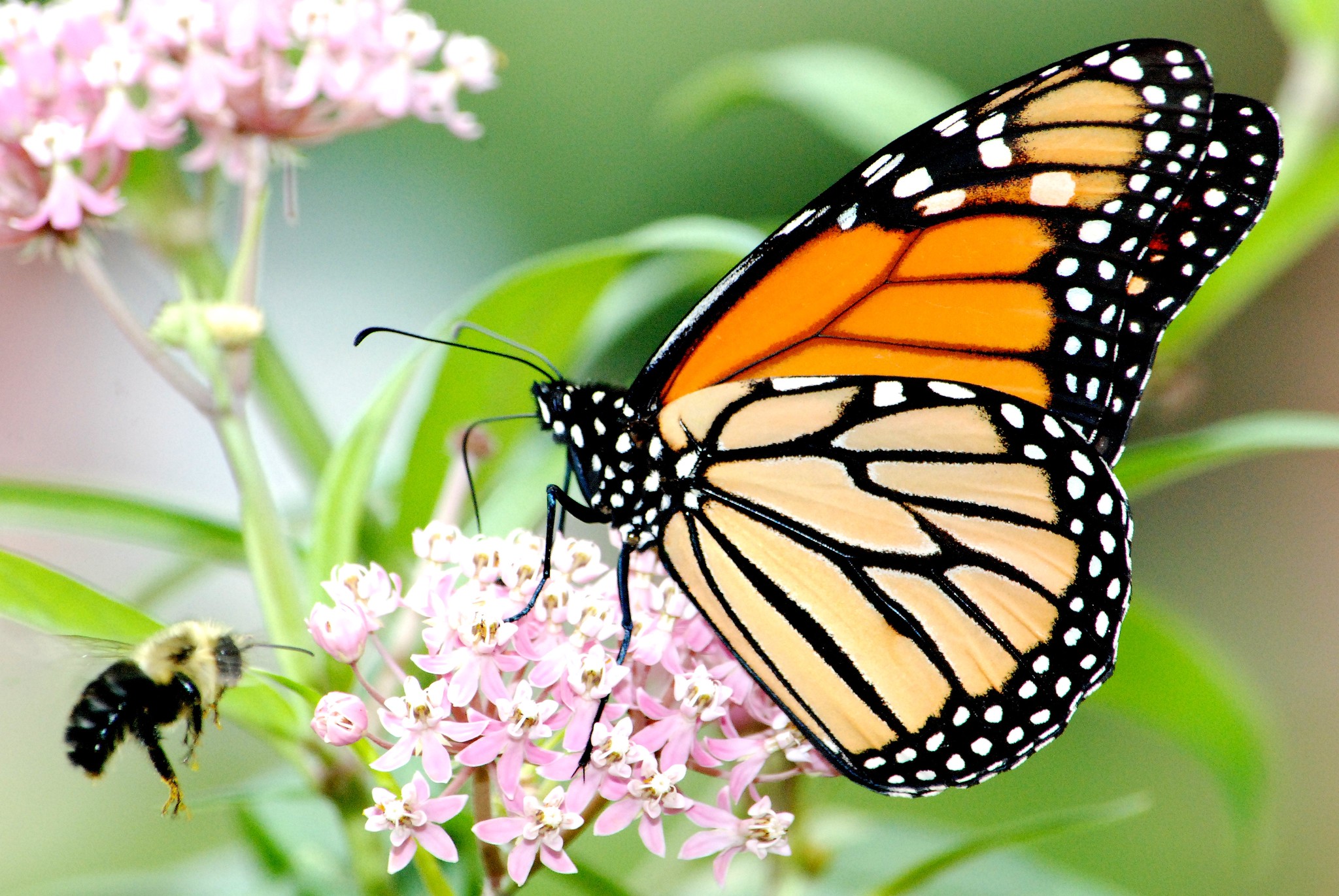
A bee and monarch visit swamp milkweed. Photo by USFWS Midwest Region
Written by Caitlyn Schuchhardt, Outreach Coordinator
Content adapted from a March 2021 Wisconsin DNR Grant Report submitted to the Natural Resources Foundation of Wisconsin, and Alliant Energy Project Report “Creating Habitat for Monarchs: Prairie Plantings at Sugar River Wetlands” by Cait Williamson